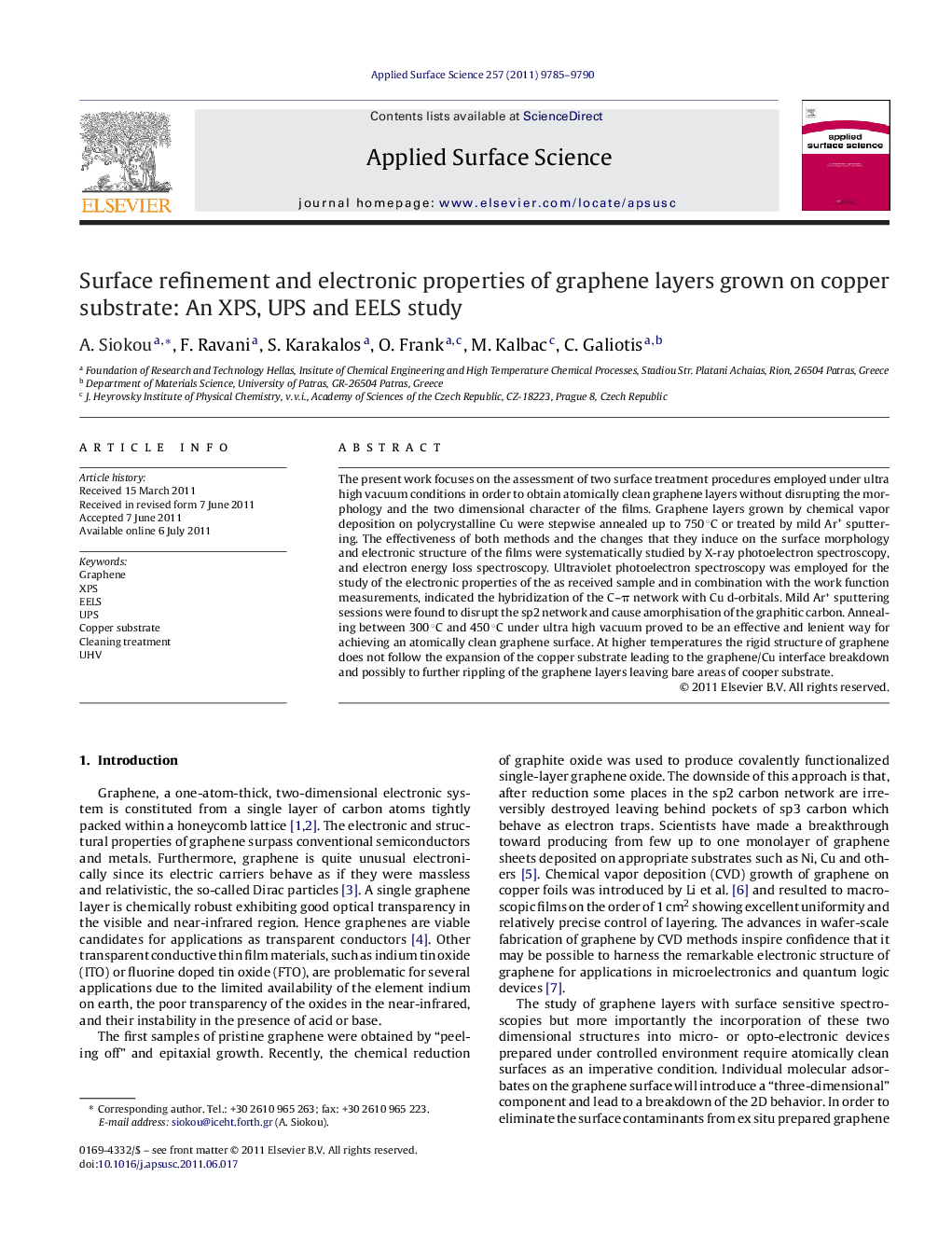| Article ID | Journal | Published Year | Pages | File Type |
|---|---|---|---|---|
| 5367347 | Applied Surface Science | 2011 | 6 Pages |
The present work focuses on the assessment of two surface treatment procedures employed under ultra high vacuum conditions in order to obtain atomically clean graphene layers without disrupting the morphology and the two dimensional character of the films. Graphene layers grown by chemical vapor deposition on polycrystalline Cu were stepwise annealed up to 750 °C or treated by mild Ar+ sputtering. The effectiveness of both methods and the changes that they induce on the surface morphology and electronic structure of the films were systematically studied by X-ray photoelectron spectroscopy, and electron energy loss spectroscopy. Ultraviolet photoelectron spectroscopy was employed for the study of the electronic properties of the as received sample and in combination with the work function measurements, indicated the hybridization of the C-Ï network with Cu d-orbitals. Mild Ar+ sputtering sessions were found to disrupt the sp2 network and cause amorphisation of the graphitic carbon. Annealing between 300 °C and 450 °C under ultra high vacuum proved to be an effective and lenient way for achieving an atomically clean graphene surface. At higher temperatures the rigid structure of graphene does not follow the expansion of the copper substrate leading to the graphene/Cu interface breakdown and possibly to further rippling of the graphene layers leaving bare areas of cooper substrate.
⢠Assessment of two treatments of graphene layers in UHV, grown ex situ by CVD on poly Cu foils. ⢠Achievement of atomically clean graphene surfaces. ⢠Morphology and two dimensional character of the films remain intact. ⢠XPS and EELS provide solid spectroscopic evidence on the purity and structural integrity of the graphene layers. ⢠Even mild Ar+ sputtering sessions disrupt the sp2 network of graphene. ⢠Annealing at â¼450 °C under UHV is lenient way to achieve atomically clean graphene surfaces.
